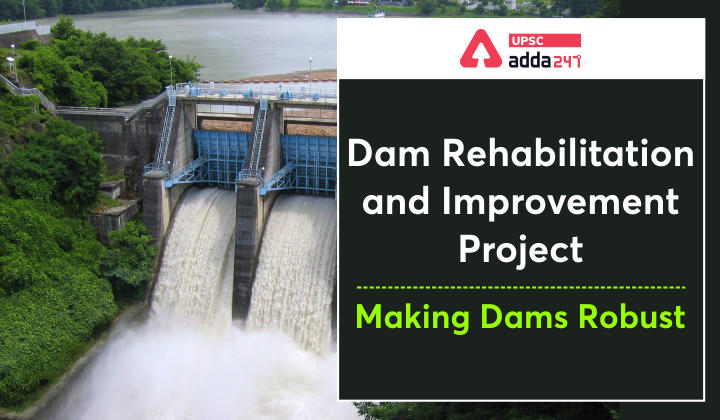Table of Contents
Relevance
GS 2: Government policies and interventions for development in various sectors and issues arising out of their design and implementation.
GS 3: Infrastructure: Energy, Ports, Roads, Airports, Railways etc.
Context
- Central Water Commission, Ministry of Jal Shakti, signed DRIP-2, a USD 250 million project, with the World Bank to make the existing dam infrastructure safe in the country.
Key points
- The Central Water Commission as well as the government representatives from 10 participating states are also part of the loan agreement.
- The loan amount is for dam safety programme and improving the safety and performance of existing dams across various states of India.
- It will strengthen dam safety by building safety guidelines, bring in global experience, and introduce innovative technologies.
- Risk-based approach to dam asset management is being introduced that is likely to transform dam safety management
- It helps to effectively allocate financial resources towards priority dam safety needs.
Background of DRIP
- In 2012, CWC and the World bank joined hands to improve safety and operational performance of dams. In India.
- It was launched as a state sector scheme to strengthen the institutions with system wide management approach.
- Originally the scheme was scheduled for six years and was scheduled to close in closure. It, however, got extended till June 2020.
- It was recently closed and it has improved the safety and sustainable performance of 223 dams in six states and one central agency.
 Get free video for UPSC CSE preparation and make your dream of becoming an IAS/IPS/IRS a reality
Get free video for UPSC CSE preparation and make your dream of becoming an IAS/IPS/IRS a reality
Objectives
- The scheme intended to rehabilitate the old dams in the country that are experiencing distress and are in need of attention for ensuring their structural safety and operational efficiency.
- It also aims to strengthen the institutional capacity and project management in the concerned area.
- It envisages greater awareness on dam safety issues and thus find novel solutions to address them by pooling best knowledge, technologies and experience available around world.
How DRIP-2 is different from its earlier version?
- DRIP-2 will support flood forecasting systems and integrated reservoir operations that will contribute to building climate resilient structures.
- It will help prepare and implement the emergency action plans to enable vulnerable downstream communities to prepare for resilience against the possible negative impacts and risks of climate change.
- It will also undertake the piloting of supplemental revenue generation schemes such as floating solar panels.
Geospatial Technologies In Water Sector
Why such projects are necessary?
- On an average, 4 among the 5 dams in our country is built 25- years ago.
- More than 200 dams are over 100 years They were built at a time when safety standards were much lower as compared to today.
- Several of these dams might be experiencing distress and need an urgent attention to remain functional.
Way forward
- Dams are important as they support agriculture by providing water for irrigation, similarly, they provide water for generating electricity through hydro-electric power.
- Moreover, they serve people by reducing the incidences of floods
- Owing to such benefits, projects like DRIP can contribute significantly to the national prosperity.
For more UPSC related content, click here.



 TSPSC Group 1 Question Paper 2024, Downl...
TSPSC Group 1 Question Paper 2024, Downl...
 TSPSC Group 1 Answer key 2024 Out, Downl...
TSPSC Group 1 Answer key 2024 Out, Downl...
 UPSC Prelims 2024 Question Paper, Downlo...
UPSC Prelims 2024 Question Paper, Downlo...
